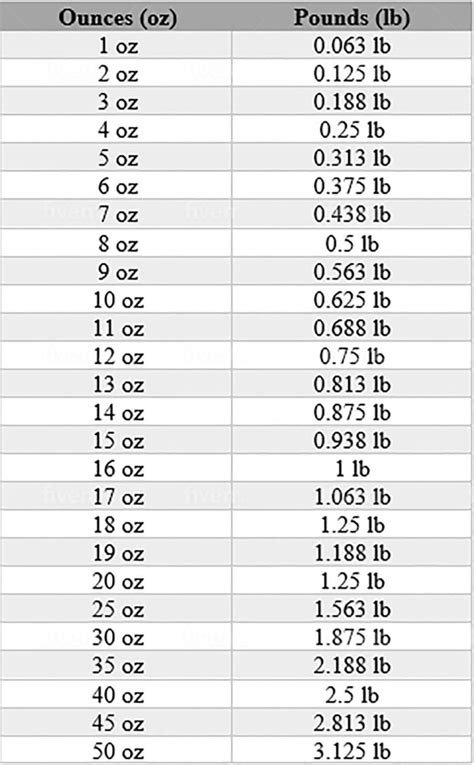12 Ounces Is How Many Pounds
Kalali
Mar 28, 2025 · 4 min read

Table of Contents
12 Ounces is How Many Pounds? A Comprehensive Guide to Weight Conversions
Understanding weight conversions is crucial in various aspects of life, from cooking and baking to shipping and construction. One common conversion many people encounter is figuring out how many pounds are in 12 ounces. While it might seem simple, understanding the underlying principles and exploring related conversions can be incredibly helpful. This comprehensive guide will delve into the conversion of 12 ounces to pounds, explore related weight units, and offer practical applications to solidify your understanding.
Understanding Ounces and Pounds
Before jumping into the conversion, let's establish a clear understanding of ounces and pounds within the imperial system of measurement.
-
Ounces (oz): An ounce is a unit of weight in the imperial system. It's a smaller unit compared to a pound. There are 16 ounces in one pound.
-
Pounds (lbs): A pound is a larger unit of weight in the imperial system. It's commonly used to measure heavier objects or quantities.
Converting 12 Ounces to Pounds
The core question: 12 ounces is how many pounds?
The answer is straightforward: 12 ounces is equal to 0.75 pounds (or ¾ of a pound).
This conversion is derived from the fundamental relationship between ounces and pounds:
- 1 pound = 16 ounces
Therefore, to convert ounces to pounds, you divide the number of ounces by 16:
12 ounces / 16 ounces/pound = 0.75 pounds
Practical Applications of the Conversion
The conversion of 12 ounces to pounds has numerous practical applications across various fields:
1. Cooking and Baking:
Many recipes, particularly those originating from countries using the imperial system, specify ingredients in ounces. Understanding the equivalent weight in pounds allows for easier scaling of recipes or substitution of ingredients based on available packaging. For example, if a recipe calls for 12 ounces of flour, you know that you need ¾ of a pound of flour.
2. Shipping and Logistics:
Shipping companies often charge based on weight. Knowing the weight in pounds is essential for accurate shipping cost calculations. If you're shipping a package that weighs 12 ounces, understanding its equivalent in pounds helps determine the appropriate shipping class and cost.
3. Construction and Engineering:
In construction and engineering projects, precise weight measurements are crucial for structural integrity and safety. Converting ounces to pounds facilitates accurate calculations and ensures materials are properly handled and utilized.
4. Everyday Purchases:
Many grocery items are labeled in both ounces and pounds. Understanding the conversion enables consumers to compare prices and make informed purchasing decisions based on the weight and cost per unit.
Expanding Your Understanding: Exploring Other Weight Units
While ounces and pounds are common, understanding other weight units enhances your overall grasp of measurement.
1. Grams (g) and Kilograms (kg):
These are the standard units in the metric system. Converting between imperial (ounces and pounds) and metric (grams and kilograms) requires a conversion factor. While the conversion from ounces to pounds is straightforward, the conversion to grams or kilograms involves multiplying by the appropriate conversion factor (approximately 28.35 grams per ounce).
2. Tons (short ton and long ton):
Tons represent larger units of weight. A short ton is equal to 2000 pounds, while a long ton is equal to 2240 pounds. These units are often used in industries like mining and shipping to represent very large quantities of material.
3. Troy Ounces:
It’s important to differentiate between standard ounces and troy ounces. Troy ounces are used for precious metals like gold and silver and are slightly heavier than standard ounces. One troy ounce is approximately 31.1 grams.
Master Your Conversions: Tips and Tricks
Mastering weight conversions involves more than just memorizing formulas. Here are a few tips to help you become proficient:
-
Practice regularly: Regular practice solidifies your understanding and makes conversions second nature.
-
Use online converters: Various online converters simplify the process, especially for complex conversions. However, understanding the underlying principles is always essential.
-
Understand the context: The context in which you encounter the weight measurement is crucial. For example, in cooking, the precision required is often less than in an engineering project.
-
Learn the conversion factors: Memorizing key conversion factors such as 1 pound = 16 ounces or 1 kilogram = 1000 grams is fundamental for efficient conversions.
Conclusion: From Ounces to Pounds and Beyond
Understanding the conversion of 12 ounces to pounds is just the beginning of mastering weight conversions. By building on this foundation and exploring related units and conversion techniques, you'll be equipped to handle a wider range of measurement challenges in various aspects of your life, from everyday tasks to more specialized fields. Remember to practice regularly and utilize online resources to solidify your understanding. This knowledge will prove invaluable in cooking, shipping, construction, and countless other applications. The ability to effortlessly convert between ounces and pounds, and even explore other weight units, is a valuable skill that enhances your problem-solving abilities and allows you to navigate the world of weights and measurements with confidence.
Latest Posts
Latest Posts
-
Equations That Represent A Proportional Relationship
Mar 31, 2025
-
How Many Cups Of Water Is In 4 Quarts
Mar 31, 2025
-
Most Protozoa Are Multicellular Colony Dwellers
Mar 31, 2025
-
The Shaft Of The Long Bone Is Called
Mar 31, 2025
-
Cuanto Es 51 Grados Fahrenheit En Centigrados
Mar 31, 2025
Related Post
Thank you for visiting our website which covers about 12 Ounces Is How Many Pounds . We hope the information provided has been useful to you. Feel free to contact us if you have any questions or need further assistance. See you next time and don't miss to bookmark.
